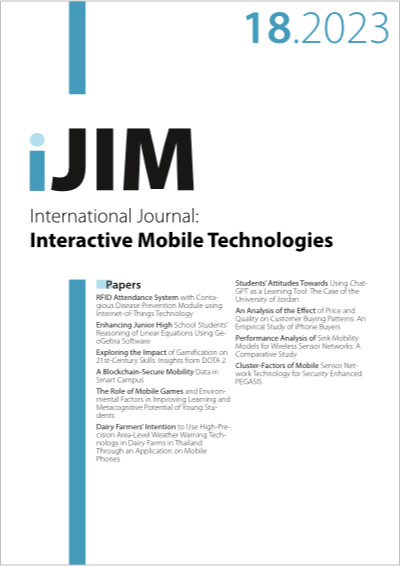Performance Analysis of Sink Mobility Models for Wireless Sensor Networks: A Comparative Study
DOI:
https://doi.org/10.3991/ijim.v17i18.42121Keywords:
Genetic algorithm (GA), Wireless Sensor Network (WSN), Mobile Sink (MS), Self-Organizing Map (SOM)Abstract
Wireless sensor networks (WSNs), deployed in the area of interest to gather data unattended, comprise numerous tiny, ponderous, and battery-operated sensor nodes (SNs). Numerous research publications presented strategies for extending the lifespan and performance of wireless sensor networks because SNs lifetime depends on limited battery life. One strategy for enhancing the performance of wireless sensor networks is to deploy an energy-rich sink capable of mobility to gather data sensed by stationary SNs. Therefore, several mobility models (MMs) were suggested. The primary objective of this investigation is to compare the effectiveness of wireless sensor networks using two MMs for mobile sinks (MSs): Kohonen’s self-organizing map-based model and the genetic algorithm-based model, in order to find the most suitable conditions under which each one of them can be used. As a result, network performance is investigated using the NS-2 simulator under various scenarios and MS speeds. Additionally, throughput, packet delivery ratio (PDR), and end-to-end (E2E) delay are the metrics used to analyze performance. Finally, messages are forwarded from their sources to the MS using the AODV routing protocol. The results show that the Kohonen-based model is suitable for small networks with moderate speeds of the mobile sink. On the other hand, the genetic algorithm-based model is suitable to be used with medium-sized networks with low speeds of the mobile sink.
Downloads
Published
How to Cite
Issue
Section
License
Copyright (c) 2023 Anas Abu Taleb, Qasem Abu Al-Haija, ammar odeh

This work is licensed under a Creative Commons Attribution 4.0 International License.



